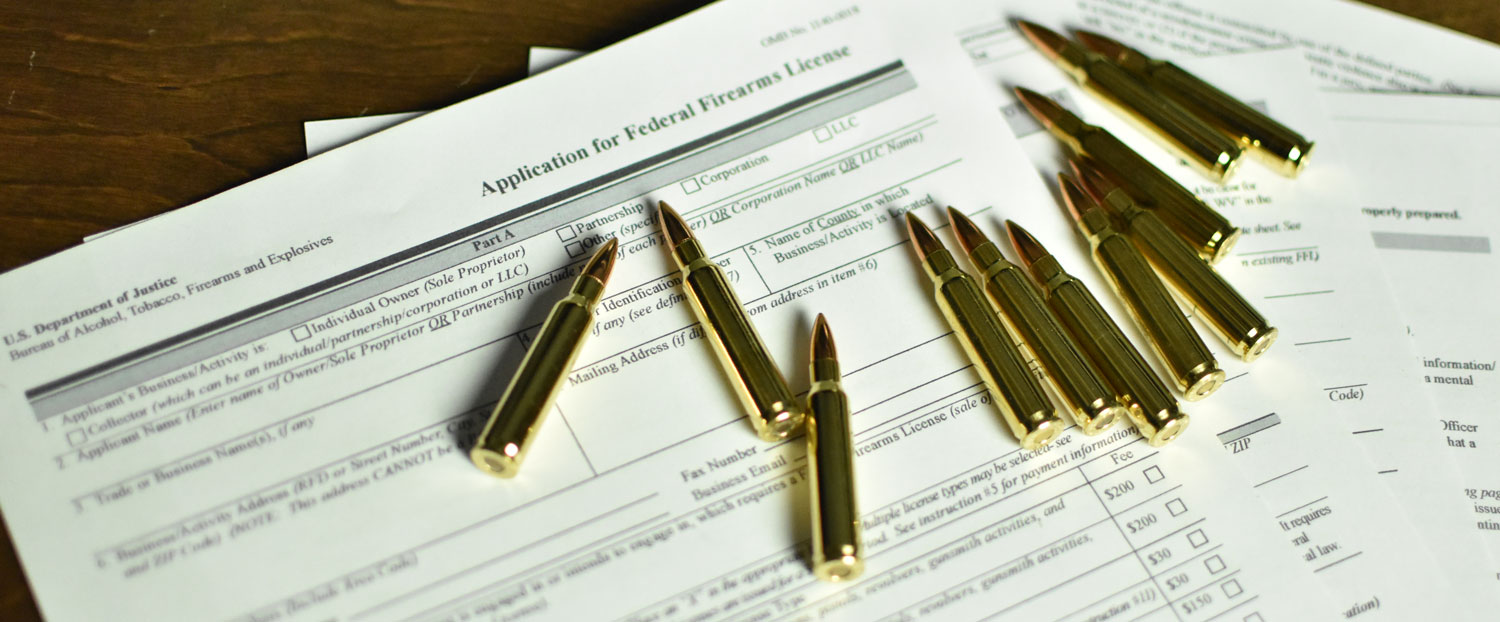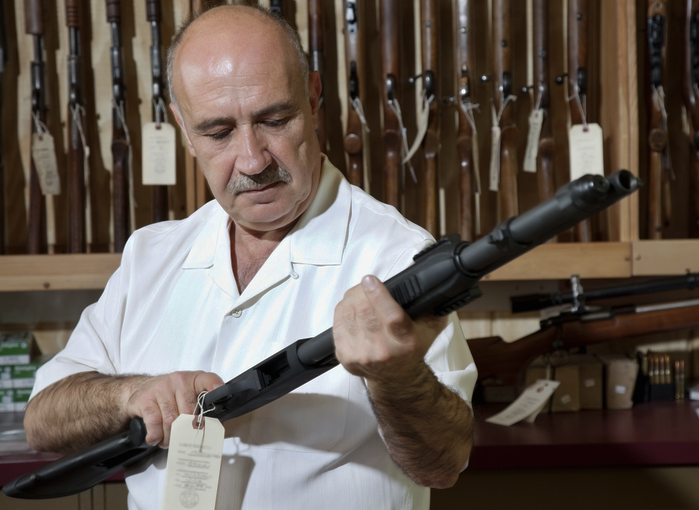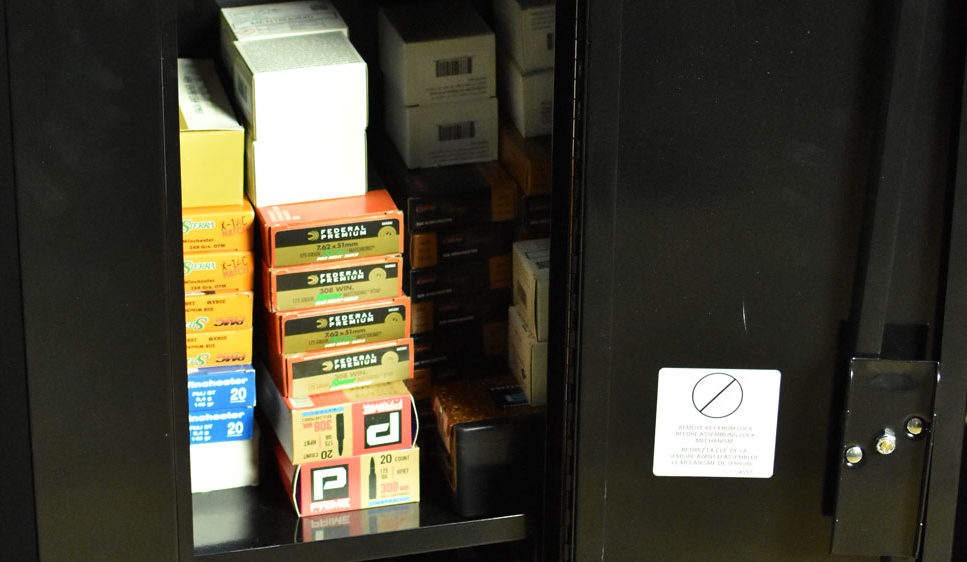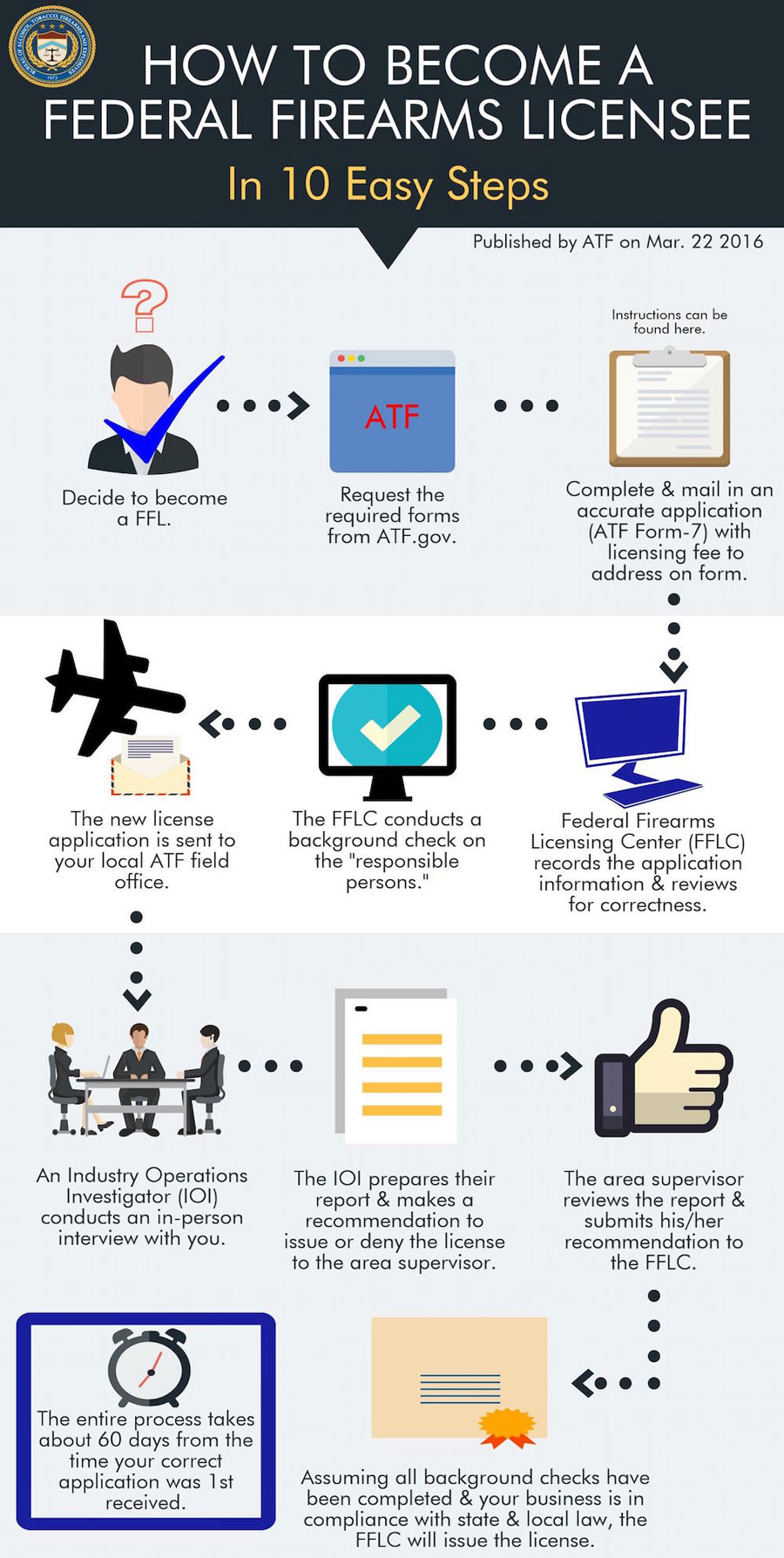With local and state governments seemingly on a mission to put more hurdles in the way when it comes to buying ammo, you might be considering getting an FFL. This article lays out the process of how to get an FFL and some things to consider before you apply.
Each year we find ourselves more and more curious about how to get an FFL.
Local city and state governments are making ammunition harder to buy as each year passes. All over our country, local politicians are passing laws restricting direct online sales – meaning retailers have to ship to an FFL who will then transfer it to you as the customer. For shooters in places like California, this means another $15-$25 per online ammo order. For some of us, it’s enough of a burden to considering getting an FFL on our own.
“A gun needs a component — and that’s the ammunition — to be deadly. And the reality is today anyone can buy ammunition anywhere… This is the next big battle, I think, in gun safety nationwide. This — ammunition.” – California Lieutenant Governor Gavin Newsom
If you’re the type who doesn’t want to get into the business of selling guns but is pretty serious about self-defense, hunting or the shooting sports, you might consider applying for a Type 3 FFL. This FFL isn’t too difficult to receive and will have you on-track to receive ammo shipments directly from online retailers along with a bunch of other benefits.
Before we continue, we should stress – this isn’t necessarily an endorsement from our team that you go out and apply for an FFL. If you take your privacy very seriously, applying for a Federal Firearms License comes with considerable expense. You are opening yourself up to a background check and other vetting by the federal government that you might not find appealing but most of the information many gun owners have already shared when passing through the National Instant Criminal Background Check System (NICS check).
What You’ll Find in this Guide:
- Definition of an FFL
- What Makes a Type 03 FFL Different?
- How to Apply for an FFL?
- FFL Requirements
- FFL License Cost?
- What Privacy or Info Do I Give Up?
- California’s Certificate of Eligibility
What is an FFL?
An FFL is a “Federal Firearms Licensee”. Essentially, these are individuals who are willing to pay a licensing fee and subject themselves to an ATF background check and potentially other vetting by the federal government. There are 11 different types of FFLs. Most of them deal with being in the business of selling firearms/ammunition or importing them for commercial purposes.
However, the ATF’s Type 03 FFL classification is a little different.
| Types of Federal Firearms Licenses | |
|---|---|
| Type 01 | Dealer in firearms but not destructive devices |
| Type 02 | Pawnbroker in firearms but not destructive devices |
| Type 03 | Collector of curios and relics |
| Type 06 | Ammo Manufacturer |
| Type 07 | Firearms Manufacturer |
| Type 08 | Ammo or Firearms Importer |
| Type 09 | Dealer in Destructive Devices |
| Type 10 | Destructive Devices Manufacturer |
| Type 11 | Importer of Destructive Devices |
Information provided by the Bureau of Alcohol, Tobacco and Firearms.
What Makes a Type 03 FFL Different?
The federal government created the Type 3 License for serious antique gun collectors. With the license, you can buy curio and relic firearms from across state lines – something most gun owners cannot do. It’s not difficult to get in terms of the process. In fact, there were more than 54,000 Type 3 FFLs in the United States in early 2018.
This Type 03 designation doesn’t allow the license holder to be in the business of selling or manufacturing firearms. However, in a state like California it does open the door to buying ammunition directly from online retailers without a third-party’s involvement.
How to Apply for the Type 03 FFL
The first step to getting your Type 03 FFL is applying to the ATF. To do that, you must complete the 12-page application and mail Copy 1 to the ATF in Atlanta. Then, give Copy 2 to your local chief law enforcement officer.
Typically, expect to wait about 60-days from the time the ATF receives the application to when you receive final word about your application. If, for some reason, you are denied an FFL, you do have the right to appeal the ATF’s decision. They give you 15-days to to file that appeal. Of course, this is extremely rare. About .15% of all applications are initially denied based on 2014 A.T.F. data.
FFL Requirements
As we mentioned, there are more than 50,000 Type 03 FFLs in the United States. So, it’s not necessarily difficult to get the license. That said, there are certain deal-breakers that will automatically disqualify you from receiving an FFL. For the most part, if you’re at least 21-years-old and you can legally purchase a firearm, you should meet the criteria set-up by the ATF to be eligible to become an FFL.
In fact, according to the ATF, the law itself is written that an application for a Federal Firearms License “will be approved” if the applicant:
• Is 21 years of age or over;
• Is not prohibited from shipping, transporting, receiving or possessing firearms or ammunition, nor in the case of a corporation, partnership, or association, is any individual possessing, directly or indirectly, the power to direct or cause the direction of the management and policies of the corporation, partnership, or association prohibited from shipping, transporting, receiving or possessing firearms or ammunition;
• Hasn’t willfully violated the Gun Control Act (GCA) or its regulations;
• Has not willfully failed to disclose material information or has not made false statements concerning material facts in connection with his or her application;
• Established premises for conducting business or collecting; and
• The applicant certifies that:
(1) the business to be conducted under the license is not prohibited by State or local law in the place where the licensed premises is located;
(2) within 30 days after the application is approved the business will comply with the requirements of State and local law applicable to the conduct of the business;
(3) the business will not be conducted under the license until the requirements of State and local law applicable to the business have been met;
(4) the applicant has sent or delivered a form to the chief law enforcement officer where the premises is located notifying the officer that the applicant intends to apply for a license; and
What Does it Cost to Be An FFL?
To be a Type 03 FFL, you have to pay the ATF $30. The license is good for three years. After 3 years, it is $30 to renew for an additional three years. If you’re in California, you’ll likely also consider applying for the state’s Certificate of Eligibility.
What Privacy or Information Do I Give Up?
You do give up a lot of personal information and rights when you become an FFL. These are things you should be familiar with and consider prior to applying.
The application itself is fairly substantial as it relates to personal information you’re asked to divulge. However, most of the information is similar to what you’ve given if you’ve passed a NICS check to buy a firearm.
Additionally, you must fill out several copies of the application and provide one of them to law enforcement in the area you live.
After receiving your Type 03 FFL, you do give up certain rights as it relates to searching your home (assuming you register as a home-based FFL). The ATF is allowed to search the premises during regular business hours without a warrant once every 12-months. There is a portion of the law that also allows them to search your premises anytime the ATF is attempting to determine the disposition of a firearm involved in a criminal investigation.
So, if you’re not the type that’s comfortable with that sort of potential government visit, an FFL is likely not right for you.
Finally, by becoming an FFL, you assume some serious responsibilities that you may not otherwise have. For example, as an FFL you have a responsibility to report any firearms lost or stolen within 48 hours. Check out the ATF’s website or talk to a lawyer for more info.
California’s Certificate of Eligibility
Californians who want to receive ammo shipments directly need more than just a Type 03 FFL. They also need a Certificate of Eligibility (COE) from the state’s Department of Justice.
The application is fairly straight-forward. It contains most of the same information as the Federal Firearms Licensee requirement with one major exception: California requires fingerprinting.
The fee is $71 and you can find the application here. You’ll also be required to cover the costs of fingerprinting for the application. California’s COE is good for one year and costs $22 annually for renewal.
Along with being able to buy ammo directly from online retailers, there are a number of other benefits for Type 03s with a California COE.
They can:
- Buy more than one handgun in any 30-day period
- Import ammunition into the state without an LAV intermediary
- Transfer antique firearms without a firearm safety certificate
- Buy a curio or relic firearm without going through California’s mandatory 10-day waiting period
- Bring a curio or relic in from outside California without an intermediary. (They must report to the Department of Justice within 5 days, however.)
So, Is It Worth It?
The question of whether it’s worth the hassle and the financial expense is one you’ll have to make on your own. For most Americans, you are looking at a cost of around $30 every three years for a Type 03 FFL. So, looking strictly at the financial burden you’re better off if you plan to transfer two or more curio or relic firearms. (Remember, you’ll still have to pay another FFL to transfer a firearm that isn’t a curio or relic).
If you’re a Californian, the equation gets a bit more tricky.
Over the course of 5-years, you’ll spend $60 on your Type 03 FFL and, assuming you apply and receive the state’s Certificate of Eligibility, you’ll drop another $159 there — for a total of $219.
Generally speaking, at AmmunitionToGo.com, we are seeing most ammo vendors charge around $20 for an ammo transfer – which seems fairly consistent with some of the cheaper transfer fees for firearms in the state. If you plan to order firearms or ammunition around twice per year, you might be better off as an FFL along with the state’s COE.
No matter what, our team will continue doing all we can to make the process as easy as possible. It shouldn’t be hard for any American to exercise their 2nd Amendment rights. We’ve generated a strong network of partners willing to transfer ammunition in California. We’ll continue to work with reputable vendors in the state so long as the law mandates it.




